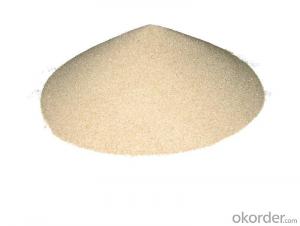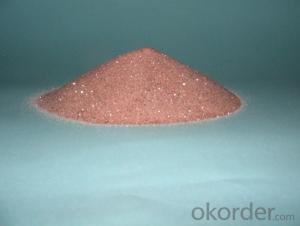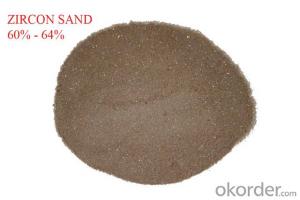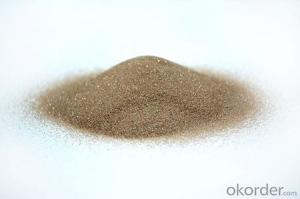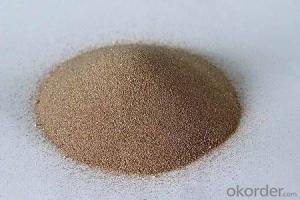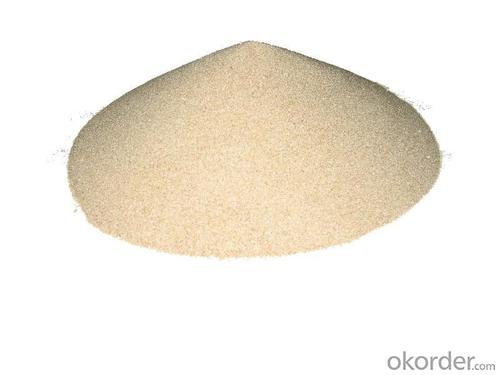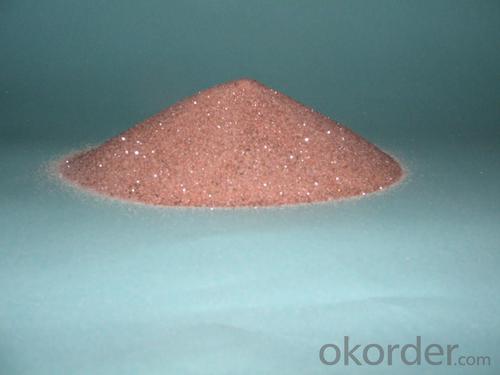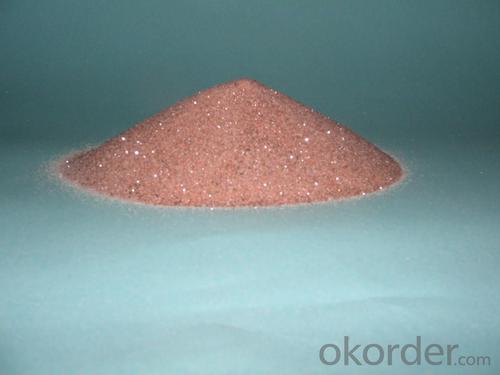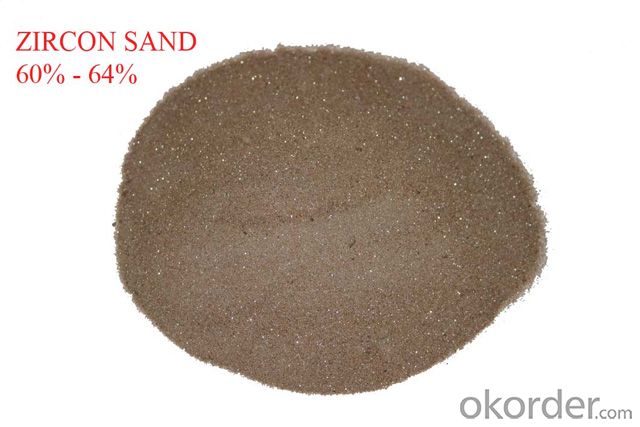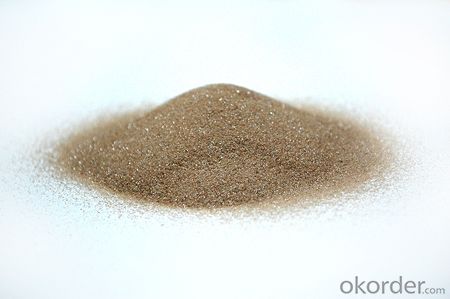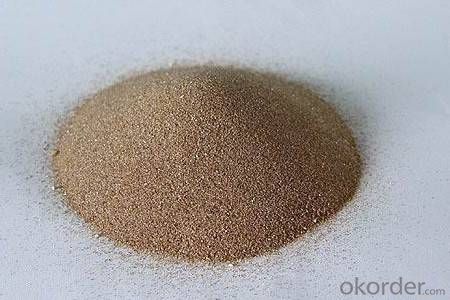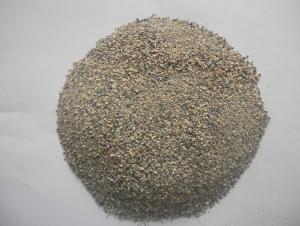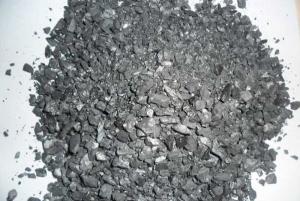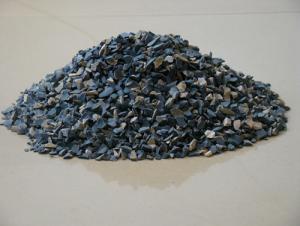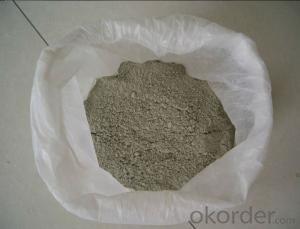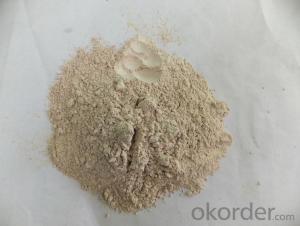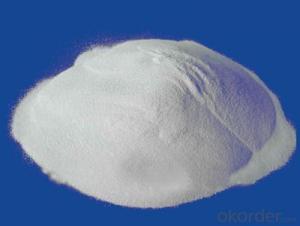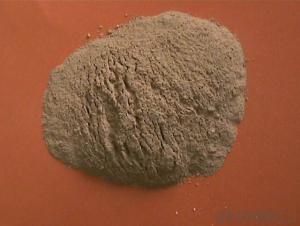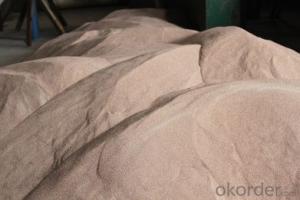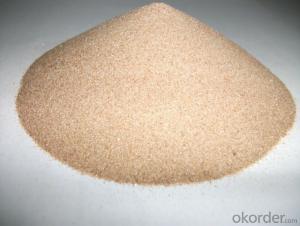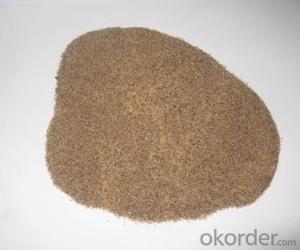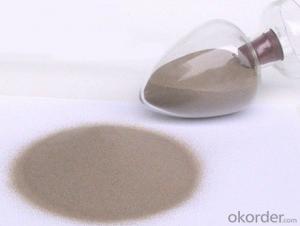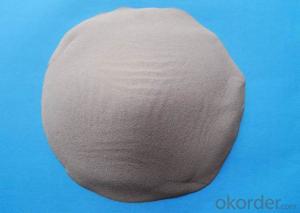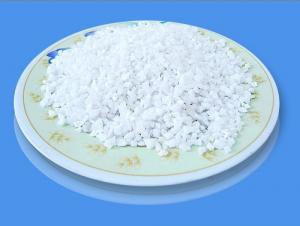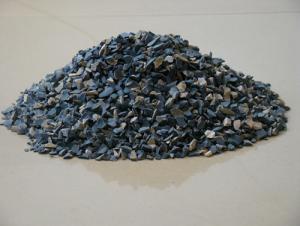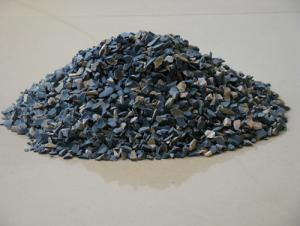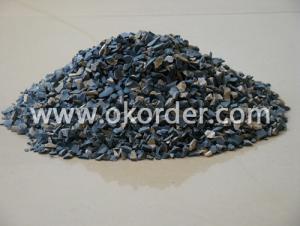Raw Materials for Refractory:Zircon Sands and Zircon Flour High Performance
- Loading Port:
- Tianjin
- Payment Terms:
- TT OR LC
- Min Order Qty:
- 25 m.t.
- Supply Capability:
- 3000 m.t./month
OKorder Service Pledge
OKorder Financial Service
You Might Also Like
Zircon Sand and Zircon Powder High Performafce for Refractory Use
1.Structure of Zircon Sand and Zircon Powder
We are offer zircon sand With Below Mention Descriptions: ZrO2 65 - 67 %. We are offer zircon sand With Below Mention Descriptions: ZrO2 65 - 67 %. Zircon is a remarkable mineral, if only for its almost ubiquitous presence in the crust of Earth. It occurs in igneous rocks as primary crystallization products, in metamorphic rocks and in sedimentary rocks as detrital grains.
Further, the mineral due to hardness, durability and chemical inertness, zircon persists in sedimentary deposits and is a common constituent of most sands.
2.Main Features of Zircon Sand and Zircon Powder
1 Tiny, round, solid ball shape provides greater surface area for improved performance and dispersion in its application
2 High refractory rating, lower specific gravity rating, and higher service temperature produces greater yield
3 With lower bulk density, it offers better air permeability for better performance as a result of its overall physical characteristics
3.Main usage of Zircon Sand and Zircon Powder
1)80-120M zircon sand is used in investment casting, the processing is called dipping
2)It can enhance the shell`s thickness
3)It is specialize used in inner layer being mixed with silica sol.
4. Zircon Sand and Zircon Powder Images
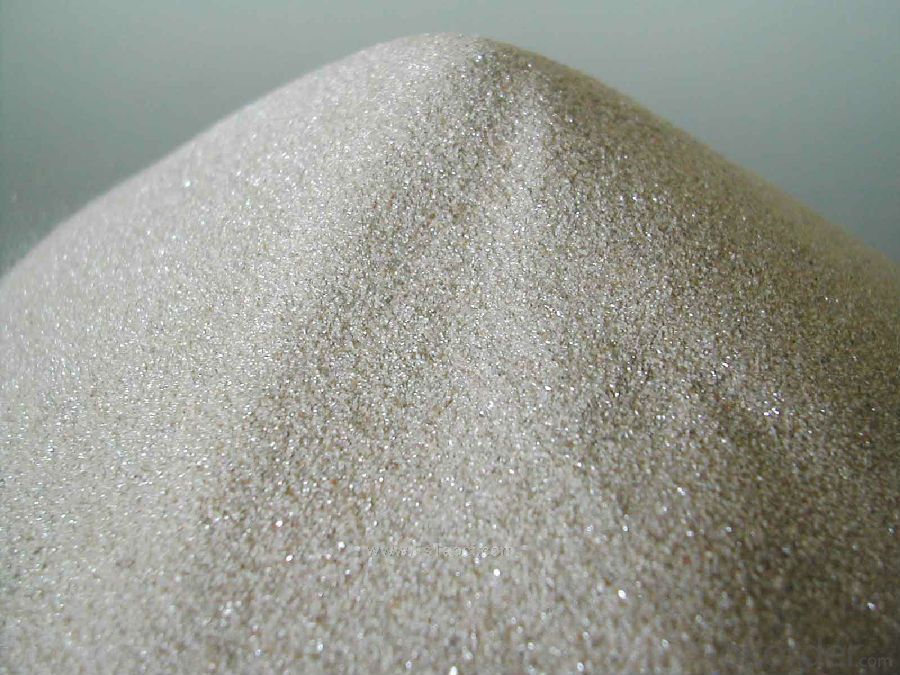
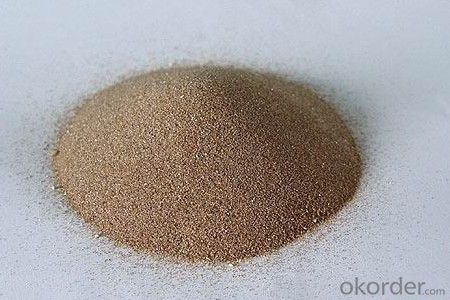
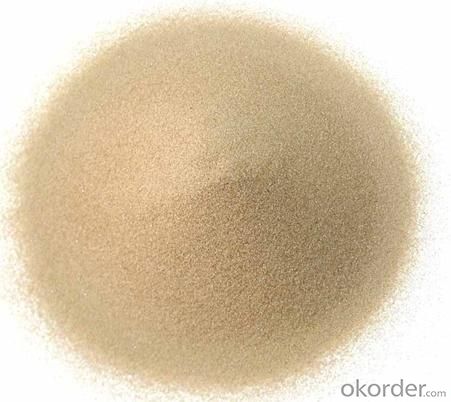
5. Zircon Sand and Zircon Powder Specification
Item | SY8 | SY6 |
Zr Content (ZrO2) | ≥66% | ≥65.5% |
Fe Content (Fe2O3) | ≤0.08% | ≤0.12% |
Ti Content (TiO2) | ≤0.10% | ≤0.10% |
6.FAQ of Zircon Sand and Zircon Powder
1). Q: Are you a factory or trading company?
A: We are a factory.
2). Q: Where is your factory located? How can I visit there?
A: Our factory is located in China. You are warmly welcomed to visit us!
3). Q: How can I get some samples?
A: Please contact me for samples
- Q: What advantage and disadvantages it has compared to common fire insulation materials
- Main advantage of A-level fire proof heat retaining plate is A-level non-conbustibility. Now residential areas strictly require the external walls to be high-level fire proof, to be specific, high fire resistance, non combustible. Standards for evaluation varies according to different types, which includes anti-corrosion, acid and alkali resistance, waterproof, anti termites and so on. Disadvantage is the insulation effect is quite ordinary. It will absorb water, get deformed, need some water prevention measures after constrcuting thermal insulating layer for it. Its thermal conductivity far below the benzene plate, and plastic extruded palte, half the thickness of the polyurethane insulation layer can reach heat perservation effectiveness of the benzene plate and extruded plate of the same thickness.
- Q: How is the division of the fire resistant level of the rock wool board?
- It's like this: China's national standard GB8624-97 divides the combustion performance of building materials into the following grades. Level A: non-flammable building materials. Level B1: flame-retardant building materials. Level B2: combustible?building?materials. Level B3 flammable building materials. section II Combustion performance and fire endurance of building components. First, The combustion performance of buildings of building components. The building is composed of components, such as foundation, walls, lubrication columns, beams, plates, roofs and stairs, ect. Building components are constituted by the building materials, whose combustion performance depends on the combustion properties of the used construction materials. Section One Combustion performance of building components. The building components are divided into three categories according to their combustion properties. First, non-combustible component: the component made by incombustible?materials. The incombustible?material refers to that when meeting the Oxygen in the air, it will not burn.
- Q: What are the requirements of refractory temperature of refractory brick?
- Oxygen fluctuation of load once happened during operation. Sometimes oxygen control valve will cause oxygen fluctuation of load, and sometimes large particles will block valve of high pressure coal slurry pump. The sudden drop in flow of coal slurry may cause relative excess of oxygen. Oxygen fluctuations directly cause fluctuations in furnace temperature. The range of oxygen fluctuations is 500m?-600m?. The maximum can reach about 1000m?. A sudden increase in oxygen causes a sudden increase in furnace temperature, which will suddenly burn out high-temperature thermocouple. The situation has a great influence on refractory brick and should be avoided. Furnace temperature is very inportant to life of lining of refractory bricks, so it should be strictly controlled not to overheat. There is a cinder layer on the surface of refractory bricks under the condition of normal production. In fact, cinder layer is dynamic. If the temperature is low, cinder layer is thick. If the temperature is high, cinder layer is thin. Appropriate cinder layer may slow the scour of high temperature gas and molten slag. The requirement of refractory brick is higher than that of stoves which use heavy oil as raw material. The main reason is permeability and corrosion of molten slag to refractory material. When replacing refractory bricks, it is found that penetration thickness is 10mm-20mm. After slag penetrates, strength decreases significantly. If temperature is high, erosion intensifies. According to the relevant information, when the operating temperature exceeds 1400 ℃, etching effect multiplies.
- Q: What is refractory aggregate?
- It includes two categories: coarse aggregate and fine aggregate.
- Q: what is the material of fixed first rate fire resistant window?
- Window frames and fireproofing glass, fire sealing strip, fireproofing glass mound layer, which is infexible fan, and the flexible fans have to plus folding and closing window cleaner. (3) window frames must be integral with the building, using wood or iron to connect the wall. After the installation of the steel frame, the cement mortar must be watered between the window frame and the wall, and it should conserve more than 24 hours before normal use.
- Q: Can anyone tell me what is a high alumina refractory?
- High alumina refractories: High-alumina refractory products have high refractoriness, compressive strength and refractoriness under load, which are used for building the high-temperature parts of various large blast furnaces, such steelmaking furnace, airheater, electric furnace, rotary?kiln and other thermal equipment.
- Q: What's the material of fireproof and wear-resisting floor?
- 1. It is the kind of special concrete floor, and its production process is the same with that of the common concrete floor, but it uses different material which needs to be the pebbles and sand after processing with marbles and dolomite. 2. Fireproof floor is a kind of decorative material which is laid on the ground of the factory or large areas of floors. It does not support combustion or it is composed of flame retardant materials. Fireproof floor has two categories. One is composed of aggregate wear-resistant material which is solid particulate matter. Its construction method is to evenly spread aggregate wear-resistant particles on the surface layer of the concrete when the floor is just pouring concrete and solidified, and then a firm flame retardant layer will be formed on the surface layer. This is the the so-called carborundum wear-resisting floor. But this kind of material has many limitations and can only be used on the surface of the just poured concrete. In addition, it is easy to fade in color and not beautiful in appearance. So this is not fireproof floor in the strict sense. Here we focus on a new liquid coating fire protection floor, which is environment friendly, widely used and beautiful in appearance. 3. Wear-resistant floor has the characteristics of pressure resistance, strong wear resistance,oil resistance, and anti-infiltration. It is also dust-free and easy to clean. After entering the initial setting of concrete, construction can be started immediately. Construction period is usually longer, but better using effect will arise.
- Q: How is the development of Xinmi refractories industry? What's its advantages and disadvantages?
- The disadvantage is too small yard, vicious competition among each other and confusion in the market, which should be the inferiority of national refractory industry . Xinmi Refractory is well developed in recent years, mostly acidic and neutral refractories. It is still relatively rare to use in iron parts, steel pile with a satin and other basic refractory slide .
- Q: How to divide fire resistant level of fire door?
- Fire resistant level of fire door【Class A fire door】. Class A fire door is also called complete fire door. It can meet the requirement of fireproof thermal insulation and refractory integrity at the same time in specified time. Fire resistant levels are 0.5h(Grade C), 1.0h(Grade B), 1.5h(Grade A) and 2.0h, 3.0h. 【Class B fire door】Class B fire door is also called part heat insulation fireproof door. Its requirement of fireproof and thermal insulation performance is 0.5h. Refractory integrity levels are 1.0h, 1.5h, 2.0h and 3.0h respectively. 【Class C fire door】Class C fire door is also called not thermal insulation fireproof door. Ther is no requirement of its fire resistance and thermal insulation. It only meets the requirement of refractory integrity in specified refractory time. The grading of refractory integrity is 1.0h, 1.5h, 2.0h and 3.0h respectively. There is the content of not thermal insulation fire door in British BS standard.
Send your message to us
Raw Materials for Refractory:Zircon Sands and Zircon Flour High Performance
- Loading Port:
- Tianjin
- Payment Terms:
- TT OR LC
- Min Order Qty:
- 25 m.t.
- Supply Capability:
- 3000 m.t./month
OKorder Service Pledge
OKorder Financial Service
Similar products
Hot products
Hot Searches
Related keywords
